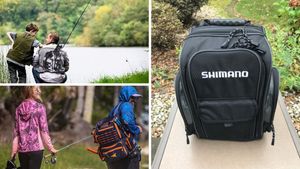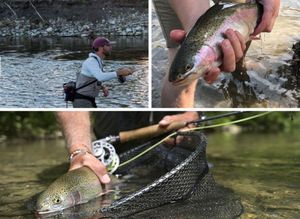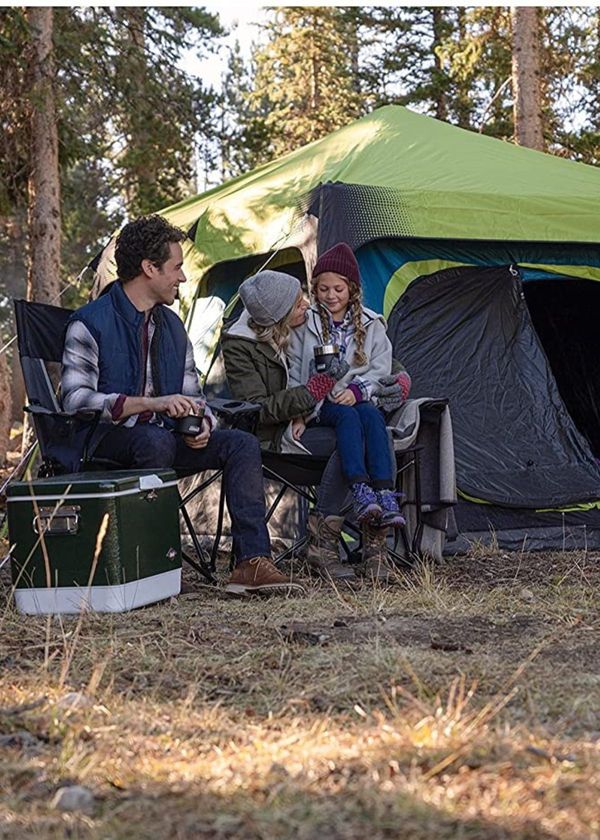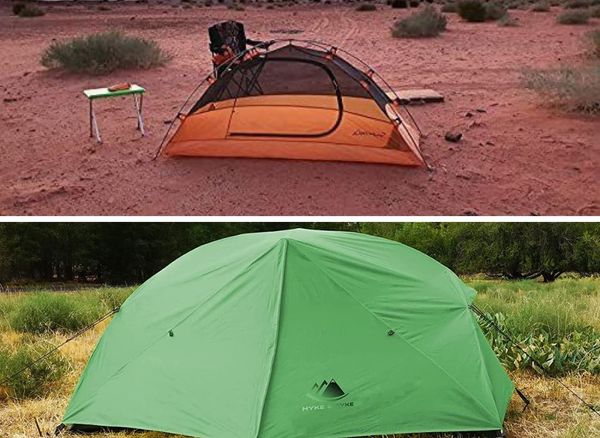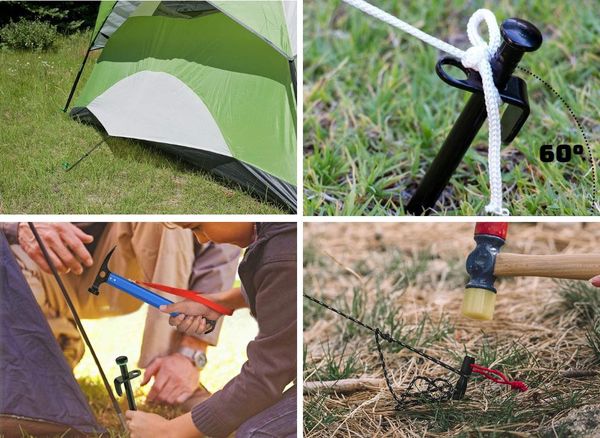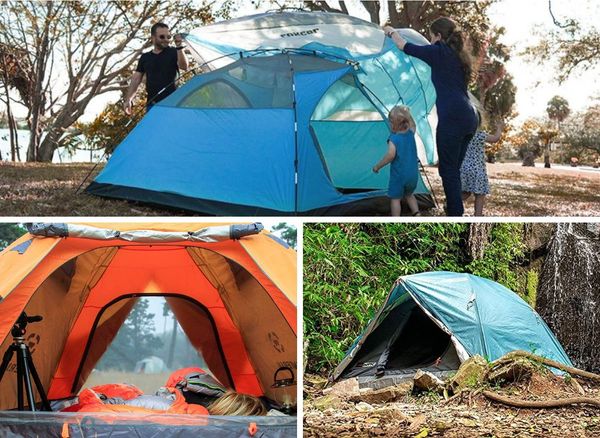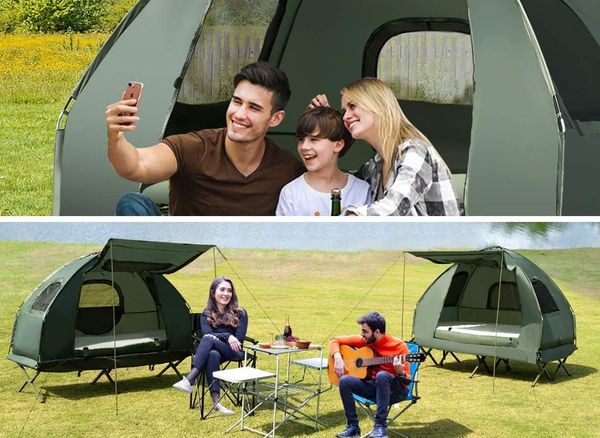Geocaching is a great way to explore the outdoors, but trying to find caches without help can be difficult. Even if you have a map and compass, it can be hard to know which direction you're supposed to go in. You might spend hours looking for a cache that's right in front of you.
Premium geocaching devices that are designed from the ground up for geocaching are the perfect solution. These apps use satellites to show you exactly where each cache is hidden. You'll never waste time looking for a cache again.
How We Choose the Best GPS Device
It can be hard to know which GPS device is the best for you since there are so many different options available.
With all of the different types of GPS handhelds on the market, it can be tough to decide which one is right for you. Do you go with a basic GPS device or one with all the bells and whistles?
We've done the hard work for you and chosen the best GPS device designed for geocaching based on our research and reviews from different customers.
Montana 700 Rugged GPS Touchscreen Navigator

The Montana® 700 Rugged GPS Touchscreen Navigator is a great tool to have while adventuring outdoors. The device is durable, water-resistant, and has been tested to U.S. military standards. This makes it perfect for use in a variety of environments.
In addition, the Montana® 700 has preloaded topographical maps for the U.S. and Canada which include terrain contours, elevations, coastlines, rivers, and landmarks. It also has the option to display federal public land boundaries on topographical maps.
Another great feature of this device is the direct-to-device downloads of Birdseye Satellite Imagery. This allows you to see photo-realistic views and create waypoints based on landmarks.
The Montana® 700 also has 16 GB of onboard memory and a microSD™ card slot for expandable storage. It utilizes the ABC sensors, including an altimeter for elevation data, a barometer to monitor weather, and 3-axis electronic compass.
Lastly, it Accesses GPS, GLONASS, and GALILEO satellite networks. Overall, the Montana® 700 is a great tool for anyone who loves spending time outdoors!
View Up-To-Date Verified Purchase Reviews
Garmin GPSMAP 65s Multi-Band GPS Handheld with Sensors

The Garmin GPSMAP® 65s is the best handheld GPS device that is perfect for navigation and outdoor activities. The device has a large color display that makes it easy to view, even in bright sunlight. It also includes multiple global navigation satellite systems, which allows for improved accuracy in challenging environments.
Additionally, the device has ABC sensors including an altimeter and barometer, as well as a 3-axis electronic compass. This allows you to navigate trails with ease and also track weather conditions.
The unit can access multiple global navigation satellite systems (GPS, GLONASS, GALILEO, and QZSS) to track in more challenging environments.
The battery life of the device lasts up to 16 hours, making it perfect for long trips or outdoor activities.
Overall, the Garmin GPSMAP® 65s is an excellent handheld device for navigation and outdoor activities and would be a great addition to any adventurer's toolkit.
View Up-To-Date Verified Purchase Reviews
Garmin GPSMAP 66i with Geocaching Live and Satellite Communicator

The Garmin GPSMAP 66i is a high-quality, durable GPS unit that is perfect for both amateurs and experts alike. With its preloaded Garmin TopoActive mapping and direct-to-device BirdsEye Satellite Imagery downloads, you'll have everything you need to explore your surroundings.
The unit is compatible with the Garmin Explore™ website and app to help you manage waypoints, routes, activities, and collections, use tracks, and review trip data from the field.
The internal, rechargeable lithium battery provides up to 35 hours of battery life in 10-minute tracking mode, making this unit perfect for long expeditions.
And with its cellular connectivity, you can access Active Weather forecasts and Geocaching Live from anywhere.
View Up-To-Date Verified Purchase Reviews
Garmin eTrex 10 Handheld GPS

The Garmin eTrex 10 Handheld GPS is a great little device that is perfect for anyone who enjoys spending time outdoors and wants to be budget conscious.
This handheld navigator comes preloaded with a worldwide base map and has a 2.2-inch monochrome display, making it easy to see your location no matter where you are.
The WAAS-enabled GPS receiver with HotFix and GLONASS support also ensures a reliable signal and fast positioning, while the waterproof design means you don't have to worry about getting it wet.
Additionally, the eTrex 10 supports paperless geocaching and can be powered with two AA batteries for up to 20 hours of use.
View Up-To-Date Verified Purchase Reviews
Garmin eTrex 22x Handheld GPS

The Garmin eTrex 22x Handheld GPS is an excellent piece of technology for anyone who loves spending time outdoors. It has a 2.2” sunlight-readable color display with 240 x 320 display pixels, which makes it much easier to read than some of the other handheld GPS devices on the market.
It also supports paperless geocaching, you can upload GPX files straight to your device and view key information such as location, terrain, and hints from Geocaching.com.
Additionally, the eTrex® 22x is preloaded with TopoActive maps with routable roads and trails for cycling and hiking, and it supports GPS and GLONASS satellite systems, making it ideal for use in more challenging environments than GPS alone.
The 8 GB of internal memory allows you to download maps directly to your device, and the microSD™ card slot provides additional storage space.
Overall, the Garmin eTrex® 22x Handheld GPS is an excellent choice for anyone who wants a reliable and easy-to-use handheld GPS device.
View Up-To-Date Verified Purchase Reviews
Garmin eTrex 32x Handheld GPS

The Garmin eTrex 32x Handheld GPS is a great tool for anyone who enjoys being outdoors. The color display is easy to read, and the device supports paperless geocaching, which makes it easy to find caches and track your progress.
The preloaded TopoActive maps with routable roads and trails are also great for cyclists and hikers.
And thanks to the 8 GB of internal memory, you can download plenty of maps for even more outdoor adventures.
The addition of a 3-axis compass and barometric altimeter makes this device even more valuable for hikers and climbers. Overall, the Garmin eTrex 32x Handheld GPS is an excellent tool for anyone who wants to explore the great outdoors.
View Up-To-Date Verified Purchase Reviews
Garmin GPSMAP 64sx Handheld GPS

The Garmin GPSMAP 64sx is a handheld GPS that is rugged and water-resistant. It has a button operation and a 2.6” sunlight-readable color display. It is preloaded with TopoActive maps featuring routable roads and trails for cycling and hiking.
The GPSMAP 64sx also has a high-sensitivity receiver with a quad helix antenna and multi-GNSS support (GPS, GLONASS, and Galileo) and 3-axis compass with a barometric altimeter.
It has wireless connectivity via BLUETOOTH technology and ANT+ technology available on GPSMAP 64sx and GPSMAP 64csx models.
The GPSMAP 64x series features paperless geocaching. Upload GPX files straight to your device, and view key information such as location, terrain, and hints from Geocaching.com. The battery life is up to 16 hours in GPS mode.
View Up-To-Date Verified Purchase Reviews
Buyers Guide
Why buy a GPS unit for geocaching?
Geocaching is a fantastic hobby, and it only gets better if you have the best GPS device to get your job done! Geocaching is one of those hobbies that gets us outdoors and back to nature - something you can't always do every day!
For a novice, geocaching can be a bit of a challenge but with the right equipment and some practice, you can learn the best ways to find your geocaching site.
GPS technology can provide an important tool in geocaching activities.
Ability to turn off distractions
Walking along a nature trail, admiring the scenery, and taking in the fresh air, you suddenly receive work-related emails. One minute you are hunting for treasure and the next you are back into your everyday existence, tasks calling to you.
A dedicated GPS device enables you to be disconnected from your everyday world while still tracking your position. You may instead get to enjoy a full geocaching experience – and appreciate Mother Nature!
Cost
Premium GPS devices can include touchscreen navigation with topographic maps, which can connect you with other geocaches. Other features including a color display, a camera, and an MP3 player are not necessary!
A cheaper device with just a basic map is much easier to use. You may have to spend a few hundred dollars on downloading and installing the maps but it will be quite an expense.
Long battery life
If you use your smartphone's GPS feature for an extended period, the battery will run out before you can say "Where the heck am I."
A smartphone can come in handy for emergencies, but a GPS device with a long-lasting battery is ideal for navigating to the cache.
If you plan to use your smartphone's GPS for a prolonged period, make sure it is fully charged first. Running out of battery power can lead to problems.
Screen size
Big color screens might be nifty but they are not really needed - a small black-and-white screen will work just fine! Backlight, light-readability, and gloves-friendly displays help geocaching be easy even when it gets very cold. These extra features use more power and may increase the cost of the device.
Weight
Always consider how much a device weighs - lugging around a bigger unit than you need can easily ruin your geocaching adventure.
Storage
Typically, GPS devices designed specifically for geocaching can have maps and other data downloaded or saved. You will have to be careful not to store extra topography map information or other data.
Generally speaking, the devices have a high amount of memory, which is more expensive, but devices that have a memory slot can readily be purchased by those who have a higher budget.
Durable & Waterproof
Geo-caching is not for the faint of heart. You will have to venture into some tough landscapes, including rugged terrain and rivers. Waterproof GPS devices are a great investment. A protective cover or pouch can prevent damage to your screen.
Best Geocaching GPS Devices - FAQs
What GPS device is best for geocaching?
There is no one "best" GPS device for geocaching, as different people have different preferences.
Some people prefer handheld devices, while others prefer smartphone apps.
Some people like devices with large screens, while others prefer smaller and more lightweight devices.
Some popular GPS devices for geocaching include the Garmin Oregon 650t, the Magellan eXplorist 510, and the Montana 700 Rugged GPS Touchscreen Navigator.
Smartphone apps that are popular for geocaching include Geocaching4LIfe, Cachly, and GeoCacher.
Do you need a GPS for geocaching?
You don't need a GPS, but it can be helpful. The most important thing is to have a device that can pinpoint your location (smartphone, tablet, etc.) and an app to geocache with.
Geocaching websites like Geocaching.com list caches near you and provide their coordinates in latitude and longitude. You can then enter those coordinates into your app to start hunting for the cache!
Can I use my phone as a GPS for geocaching?
Yes, your phone can be used as a GPS for geocaching. To do this, you will need to install a geocaching app on your phone. There are many different geocaching apps available, so you should be able to find one that meets your needs.
How do I geocache with my Garmin GPS?
There are a few ways to do this. One way is to go to the main menu and select "cache." This will bring up a list of all the caches in the area. You can then select the one you want to find, and the GPS will take you right to it.
Another way is to use the "find by location" feature on your GPS. To do this, you'll need to know the coordinates of the cache you're looking for. Then, enter these coordinates into your GPS, and it will take you right to it.
Finally, you can also search for caches on geocaching websites or apps. These websites and apps usually have detailed information about each cache, including its coordinates
How do I download maps from geocaching?
There are a few different ways to download maps from geocaching, depending on which platform you're using.
For geocaching.com, there is an option to download maps for offline use.
To do this, open the map of the area you want to download and then click on the three lines in the top left corner of the map. This will open a menu with an option to "Download Map."
If you're using an app like Geocaching Intro or Cachly, you can usually just tap on a cache and then select "View Details." This will show you a map of the area with the cache highlighted. Tap on the three lines in the top left corner of the map,
How do I find geocaches near me?
There are a few ways to find geocaches near you. You can use the Geocaching website or app to find caches in your area.
Another option is to use a service like OpenCaching, which includes caches from all over the world.
Finally, you can also search for caches on specific websites or forums, or contact a local geocacher to ask for suggestions.
Can you get money from geocaching?
People have been known to find money, jewelry, and other valuable items while geocaching. However, it is not a common occurrence. Most caches contain small treasures like keychains or coins.
How accurate are handheld GPS devices?
They are very accurate but can be affected by dense tree cover, buildings, and other obstructions. Generally, they are accurate to within about 10 meters.
Can you geocache without cell service?
Yes, you can geocache without cell service. However, you will need to have a data connection to load the map and coordinates onto your GPS unit. You can also print out a paper copy of the map and coordinates if you're not able to get online. Happy hunting!
What are the three main rules of geocaching?
- Always use common sense when geocaching. If it looks like it's not safe, or if you're in an area that you don't feel comfortable being in, then don't do it.
- Always try to replace objects exactly as you found them. This includes hiding the cache container and replacing the lid exactly as you found it.
- Always leave no trace of your visit. This means packing out everything that you brought with you, and not damaging or disturbing the natural environment around the cache location.
Who invented geocaching?
The first documented instance of geocaching was on May 3, 2000. Dave Ulmer placed a black bucket in the woods near Portland, Oregon, and hid a logbook and pen inside. He announced the existence of the cache on Usenet and included instructions on how to find it. Within three days, the cache had been found by two other people.
Geocaching enthusiasts regard the first find as ceremonial and often refer to it as "the First Finder." A few months later, an international organization called Groundspeak Inc. was formed to manage geocaching affairs including maintaining a registry of caches worldwide.
Best GPS for Geocaching Device For You
Thanks for sticking with us as we scouted out the best GPS devices on the market. We hope our list and reviews have helped you decide on which one to purchase for your next trip into the woods.
As always, if you have any questions or need more help deciding on the right geocaching GPS device for you, don’t hesitate to reach out to us.
And don’t forget to check out prices on Amazon – they tend to be lower than most other retailers. Happy hunting!

